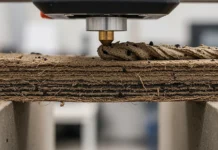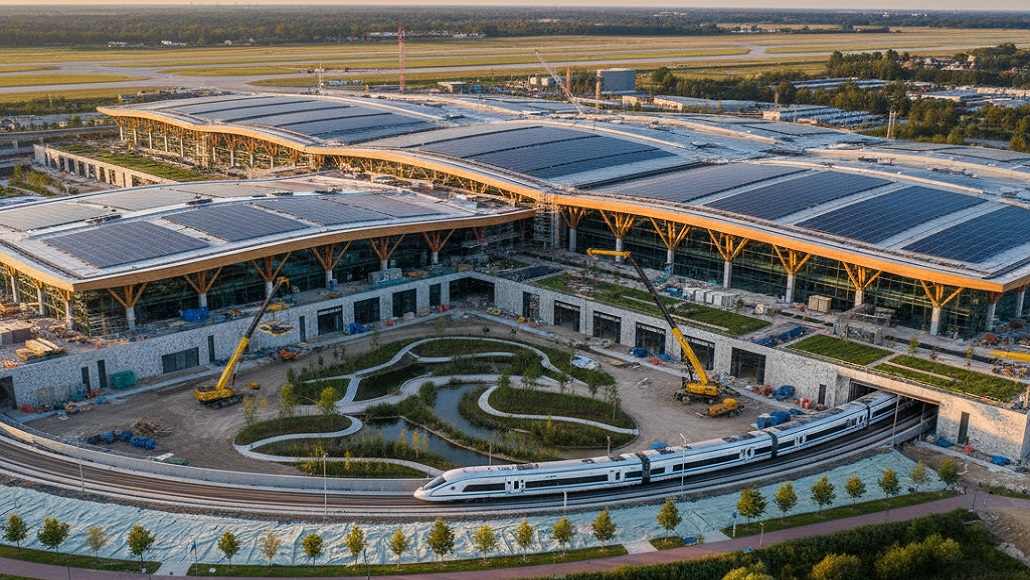Carbon Accounting: Building Low-Emission Terminal Infrastructure
The construction industry’s commitment to environmental stewardship has reached a pivotal moment, where carbon accounting in terminal construction has evolved from optional sustainability reporting to mandatory compliance and competitive advantage. As global climate initiatives intensify and regulatory frameworks become more stringent, terminal construction projects must integrate comprehensive carbon tracking and reduction strategies throughout their entire lifecycle.
Modern terminal construction projects contribute significantly to global carbon emissions through material production, transportation, construction activities, and operational energy consumption. Carbon accounting provides the framework for measuring, monitoring, and managing these emissions while identifying opportunities for reduction that align with broader sustainability objectives and regulatory requirements.
The integration of carbon accounting practices into terminal construction represents a fundamental shift toward data-driven environmental management, where precise measurement and continuous monitoring enable informed decision-making about materials, processes, and operational strategies. This approach transforms sustainability from an aspirational goal into a measurable performance indicator that drives tangible improvements in environmental impact.
Understanding Carbon Footprint in Terminal Construction
Terminal construction projects generate carbon emissions across multiple phases and categories, requiring comprehensive accounting systems that capture both direct and indirect sources. Embodied carbon represents the emissions associated with material production, manufacturing, and transportation to construction sites, while operational carbon encompasses energy consumption during construction activities and equipment operation.
Material selection decisions significantly impact the overall carbon footprint of terminal projects, as different materials carry vastly different embodied carbon values. Concrete, steel, aluminum, and specialized building materials each contribute unique carbon profiles that must be evaluated and optimized to minimize overall project emissions.
Construction activities generate additional carbon emissions through equipment operation, transportation of materials and personnel, and temporary power generation for construction sites. Heavy machinery, cranes, and specialized equipment required for terminal construction typically rely on fossil fuels, creating direct emissions that must be quantified and managed through carbon accounting systems.
Lifecycle Carbon Assessment
Comprehensive carbon accounting in terminal construction extends beyond immediate construction activities to encompass the entire facility lifecycle, including maintenance, renovations, and eventual demolition or repurposing. This lifecycle approach provides a more accurate assessment of total environmental impact and enables long-term planning for carbon reduction initiatives.
Operational carbon emissions from completed terminals represent a significant portion of total lifecycle emissions, encompassing energy consumption for lighting, heating, cooling, and specialized terminal equipment. Carbon accounting systems must project these operational emissions and identify design strategies that minimize long-term energy requirements while maintaining operational effectiveness.
Advanced Carbon Tracking Technologies
Modern carbon accounting relies on sophisticated tracking technologies that provide real-time visibility into emissions sources and reduction opportunities. Digital platforms integrate data from multiple sources to create comprehensive carbon dashboards that enable project managers to monitor progress toward sustainability targets and identify areas requiring immediate attention.
IoT sensors and monitoring systems continuously track energy consumption, equipment efficiency, and material usage throughout construction phases, providing granular data that supports precise carbon calculations. These systems eliminate manual data collection while improving accuracy and enabling real-time adjustments to construction practices that reduce emissions.
Blockchain technology is increasingly being utilized to create immutable records of carbon emissions and reduction activities, providing transparent and verifiable documentation of sustainability performance. This technology enables trusted sharing of carbon data between project stakeholders and supports compliance with increasingly stringent reporting requirements.
Automated Emissions Monitoring
Automated monitoring systems reduce the administrative burden of carbon accounting while improving data accuracy and completeness. These systems integrate with construction equipment, material tracking systems, and energy monitoring platforms to automatically calculate emissions based on actual usage and consumption patterns.
Machine learning algorithms analyze historical emissions data to identify patterns and predict future carbon performance, enabling proactive management of sustainability initiatives. These predictive capabilities support strategic planning and help project teams optimize construction sequences and material choices to minimize overall carbon impact.
Sustainable Materials Integration
The selection and sourcing of sustainable materials represents one of the most impactful strategies for reducing carbon emissions in terminal construction. Carbon accounting provides the data foundation for evaluating alternative materials and making informed decisions that balance performance requirements with environmental impact.
Low-carbon concrete alternatives, including recycled aggregates, supplementary cementitious materials, and innovative binding agents, can significantly reduce embodied carbon while maintaining structural performance requirements. Carbon accounting systems enable precise comparison of different concrete formulations to identify optimal solutions for specific applications.
Recycled and renewable materials offer additional opportunities for carbon reduction, particularly when sourced from local suppliers that minimize transportation emissions. Steel recycling, reclaimed wood products, and innovative composite materials manufactured from renewable sources can substantially reduce the carbon footprint of terminal construction projects.
Material Supply Chain Optimization
Carbon accounting extends to supply chain management, where transportation distances, manufacturing processes, and supplier sustainability practices all contribute to overall project emissions. Local sourcing strategies can dramatically reduce transportation-related emissions while supporting regional economic development and reducing project risk.
Supplier assessment programs evaluate carbon performance throughout the supply chain, enabling construction teams to select partners that align with project sustainability objectives. These programs often include supplier development initiatives that help vendors improve their own carbon performance while contributing to project sustainability goals.
Green Building Certification Integration
Carbon accounting supports terminal construction projects pursuing green building certifications such as LEED, BREEAM, or other regional sustainability standards. These certification programs provide frameworks for measuring and documenting sustainability performance while establishing benchmarks for carbon reduction achievement.
The integration of carbon accounting with certification requirements ensures that sustainability initiatives are properly documented and verified, supporting credential applications and providing third-party validation of environmental performance. This documentation becomes increasingly valuable as sustainability reporting requirements expand and stakeholder expectations evolve.
Certification programs often require specific carbon reduction targets and reporting protocols that must be integrated into project planning and execution processes. Carbon accounting systems provide the measurement and documentation capabilities necessary to meet these requirements while supporting continuous improvement initiatives.
Performance Monitoring and Verification
Ongoing monitoring and verification activities ensure that carbon reduction initiatives achieve their intended results while identifying opportunities for additional improvements. Regular audits and assessments validate carbon accounting data and provide independent verification of sustainability performance claims.
Third-party verification services are increasingly required for carbon reporting and certification programs, making accurate and comprehensive carbon accounting essential for project credibility and compliance with sustainability commitments.
Innovative Construction Technologies for Carbon Reduction
Technology adoption in terminal construction provides significant opportunities for carbon reduction through improved efficiency, reduced waste, and optimized resource utilization. Prefabrication and modular construction techniques can reduce on-site construction time and minimize waste generation while improving quality and consistency.
Advanced construction equipment with improved fuel efficiency and reduced emissions contributes directly to carbon reduction objectives. Electric and hybrid construction equipment, renewable energy systems for construction sites, and energy-efficient temporary facilities all contribute to lower overall project emissions.
Digital construction technologies enable optimization of construction sequences, resource allocation, and logistics planning that minimize carbon emissions while improving project efficiency. These technologies support real-time decision-making that balances productivity objectives with sustainability performance requirements.
Waste Reduction and Circular Economy
Waste reduction strategies integrated with carbon accounting systems provide dual benefits of environmental improvement and cost savings. Construction waste diversion programs, material reuse initiatives, and circular economy principles all contribute to carbon reduction while demonstrating environmental stewardship.
Material recovery and recycling programs at construction sites can significantly reduce waste disposal emissions while recovering valuable materials for reuse. Carbon accounting systems track these activities and quantify their environmental benefits, supporting continuous improvement and stakeholder reporting.
Energy Efficiency and Renewable Energy Integration
Terminal construction projects increasingly integrate renewable energy systems and energy-efficient technologies that reduce operational carbon emissions throughout the facility lifecycle. Solar photovoltaic systems, wind generation, and geothermal systems can provide clean energy for both construction activities and long-term terminal operations.
Energy storage systems enable optimal utilization of renewable energy while providing resilience and reliability for critical terminal operations. Battery storage, pumped hydro, and other storage technologies support renewable energy integration while reducing reliance on fossil fuel-powered backup systems.
Smart building systems optimize energy consumption through intelligent controls, demand response capabilities, and integration with renewable energy sources. These systems continuously monitor and adjust energy usage based on occupancy patterns, weather conditions, and operational requirements, minimizing carbon emissions while maintaining optimal terminal performance.
Building Performance Optimization
High-performance building envelopes reduce energy requirements for heating, cooling, and lighting while improving occupant comfort and operational efficiency. Advanced glazing systems, insulation technologies, and building envelope design strategies all contribute to reduced operational carbon emissions.
Natural lighting and ventilation strategies reduce energy consumption while improving terminal environments for passengers and workers. These passive design strategies provide long-term carbon reduction benefits while reducing operational costs and improving facility sustainability.
Regulatory Compliance and Reporting
Carbon accounting in terminal construction must address increasingly complex regulatory requirements and reporting obligations that vary by jurisdiction and funding source. Environmental impact assessments, carbon disclosure requirements, and sustainability reporting standards all require comprehensive data collection and analysis capabilities.
Regulatory compliance programs must be integrated into project planning and execution processes to ensure that carbon accounting systems capture all required data and provide necessary documentation for regulatory submissions. This integration prevents compliance issues while supporting efficient project delivery.
International standards and frameworks such as the Greenhouse Gas Protocol provide guidance for carbon accounting practices while ensuring consistency and comparability across projects and organizations. These standards support benchmarking activities and enable meaningful comparison of sustainability performance between different terminal projects.
Stakeholder Communication and Transparency
Effective communication of carbon performance requires clear and accessible reporting that demonstrates progress toward sustainability objectives while highlighting achievements and challenges. Stakeholder reporting must balance technical accuracy with accessibility to ensure that diverse audiences can understand and appreciate sustainability efforts.
Transparency initiatives build trust and credibility while supporting broader sustainability advocacy efforts within the construction industry. Open reporting of carbon accounting data and reduction strategies encourages adoption of best practices while contributing to industry-wide environmental improvement.
The future of terminal construction depends increasingly on successful integration of carbon accounting and reduction strategies that address regulatory requirements, stakeholder expectations, and competitive pressures. Organizations that develop comprehensive carbon management capabilities position themselves for success in an increasingly carbon-constrained business environment while contributing to global climate objectives through measurable environmental improvements.
Carbon accounting in terminal construction represents both a technical challenge and a strategic opportunity that requires sustained commitment, technological investment, and cultural change throughout project organizations. The successful implementation of these systems creates lasting value through reduced environmental impact, improved operational efficiency, and enhanced competitive positioning in markets that increasingly prioritize sustainability performance.































